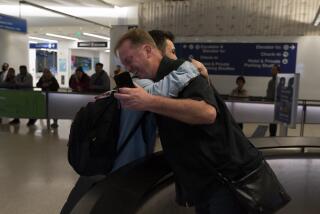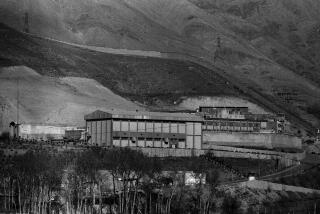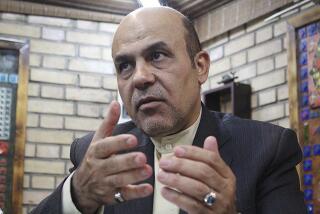Mohi Sobhani, 70; Held Hostage at U.S. Embassy in Iran in 1980
- Share via
Under cover of darkness, the family of three escaped -- mainly by camel -- through the rugged terrain of northern Iran to Pakistan.
The ride would take only an hour, Mohi Sobhani had assured his reluctant wife as he persuaded her to climb on the hump-backed beast with their 5-year-old daughter in late 1981.
He and his family reached freedom 18 hours later.
An Iranian-born American, Sobhani had been among a group of hostages held at the U.S. Embassy in Iran.
Sobhani, 70, died of heart failure Wednesday at Cedars-Sinai Medical Center in Los Angeles, said his sister, Farah Ramchandani.
The engineer from Van Nuys and his family were boarding a plane in Tehran on Sept. 6, 1980, to travel to the United States when Sobhani was detained by Iranian officials.
While his wife and child remained in Tehran, Sobhani was imprisoned with a group of 52 other American hostages that had been held captive since November 1979.
The Iranians accused him of being “an American spy or a Zionist” because he held a U.S. passport, Sobhani said later.
His Iranian captors kept him blindfolded during much of his confinement and carried out what he repeatedly referred to as “mental torture.”
Sobhani was sentenced to death and subjected to a mock execution -- a gun was fired next to his ear. Sobhani thought he had been killed, but “once he heard people talking he knew he was still alive,” his sister said.
The 52 hostages were released during President Reagan’s inauguration ceremony Jan. 20, 1981.
Sobhani was freed about two weeks later but barred from leaving the country.
Sobhani, a UCLA graduate who had lived in the U.S. since 1955, moved to Iran in 1974 as an employee of Rockwell International. After Rockwell pulled out in 1979, he started his own computer business. He met and married his wife there.
After being freed from the embassy, Sobhani spent almost 11 months in hiding, moving from house to house in an Iranian underground network, he told Computerworld magazine in 1982.
To train for the family’s escape, he sneaked into northern Iran to try out the various modes of transportation that they would ride to freedom -- horse, mule, motorcycle and, finally, camel.
The U.S. opened its embassy in Pakistan on New Year’s Eve to issue the family passports and visas, and they arrived in the U.S. two days later.
More to Read
Sign up for Essential California
The most important California stories and recommendations in your inbox every morning.
You may occasionally receive promotional content from the Los Angeles Times.











